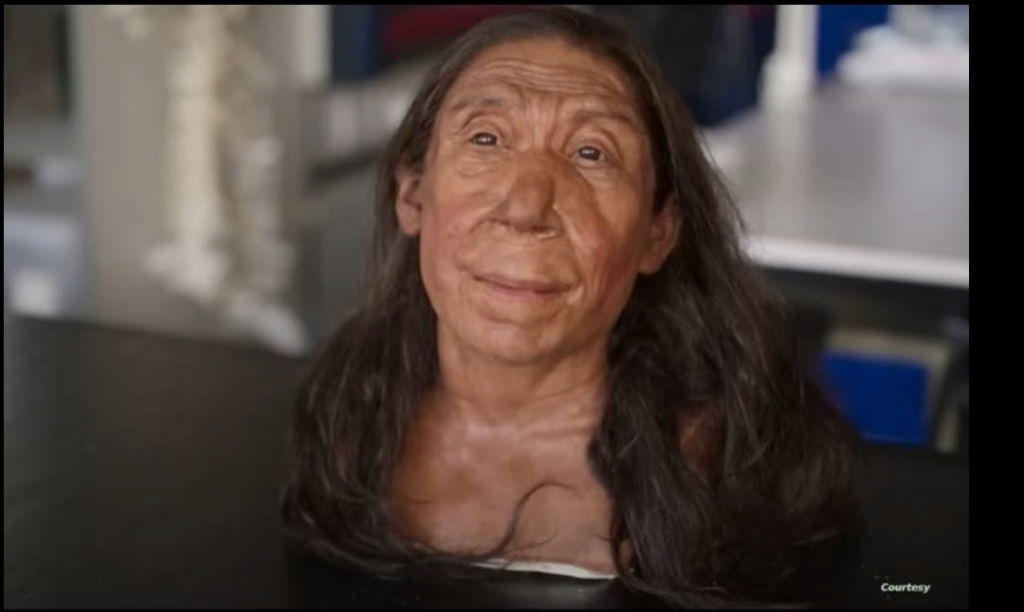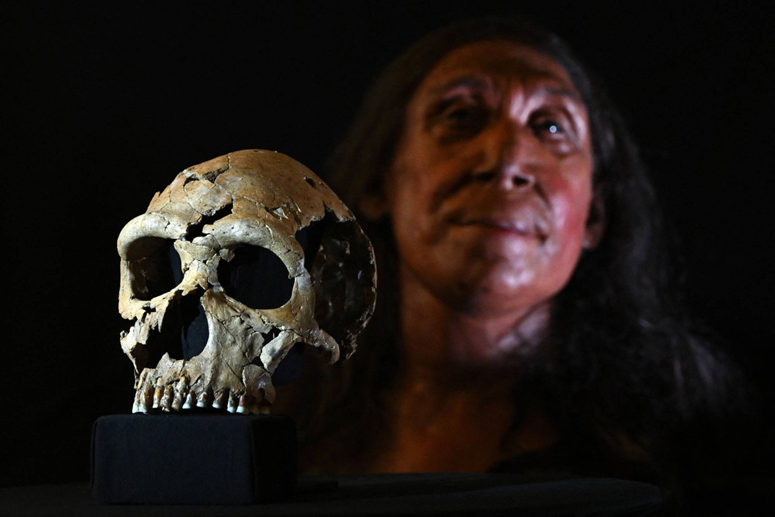Scientists reveal the shape of a Neanderthal woman in Iraq

She was buried in Iraq 75 thousand years ago.. Scientists reveal the shape of a Neanderthal woman..
Archaeologists were able to reconstruct the face of a Neanderthal woman, who is considered the closest to the current human form. She lived about 75,000 years ago in a cave in northern Iraq.
The British newspaper "The Independent" said that the skeletal remains of the woman, called Shandar Z, were first discovered in 2018 in Shandar Cave, which is believed to have been used to bury the dead.
She added that studies conducted since the 1950s showed that Neanderthals buried their dead in the cave located in the Zagros mountain range in Erbil Governorate, and performed funeral rituals, such as placing them on a bed of flowers.
Evidence collected from the cave site suggests that Neanderthals were far more evolved than the primitive creatures many have assumed were built on the stocky frame and ape-like brow associated with this ancient type of human.

Although Neanderthals, who are believed to have gone extinct 40,000 years ago, had skulls very different from those of humans, the reconstructed face of this Neanderthal woman, who is believed to have been in her 40s when she died, shows that their appearance was very close. From humans.
These findings were revealed in a new documentary entitled “Secrets of the Neanderthal Man,” produced by the BBC and released on the Netflix platform recently.
The newspaper quotes Cambridge University archaeologist Emma Pomeroy as saying that “Neanderthal skulls contain huge forehead ridges and lack a chin, with a prominent face in the middle that makes their noses more prominent.”
"But the reconstructed face indicates that these differences from the current human face did not actually exist," Pomeroy adds.
The woman's remains, including a flattened skull about 2 centimeters thick, are among the best-preserved Neanderthal fossils found during the current century, the researchers said.
According to the newspaper, it is believed that the woman's skull was crushed shortly after her death, most likely due to rocks falling on her.
After carefully removing the woman's remains, including her skeleton almost to the waist, the University of Cambridge researchers used a glue-like adhesive to strengthen the bones and surrounding remains.
Scientists then collected more than 200 pieces of her skull to restore it to its original shape, including its upper and lower jaws.
The researchers then scanned the surface of the reconstructed skull and printed it using 3D printing technology, after adding layers of fabricated muscle and skin to reveal her face.
Source: websites

